Gambling participation, experience of harm and community views
An overview
March 2023
Rebecca Jenkinson, Cailem Murray Boyle, Kei Sakata, Nancy Greer, Uma Jatkar, Brian Vandenberg
Download Research snapshot
Summary
Policy makers, service providers, researchers and the broader community have raised concerns about the proliferation of wagering advertising in Australia and its impacts on gambling behaviour and risk of harm. To enhance understanding and inform improved policy responses, we asked Australian adults about their participation in gambling, attitudes towards wagering advertising, how exposure to advertising influences their behaviour and their views on potential policy responses.
Background
Gambling is a major public policy issue in Australia, affecting the health and wellbeing of many individuals and families in a range of ways (Australian Gambling Research Centre [AGRC], 2021). Recent estimates suggest that Australians lose approximately $25 billion on legal forms of gambling every year, representing the largest per capita losses in the world (Queensland Government Statistician's Office [QGSO], 2021). While participation in traditional 'land-based' gambling (e.g. poker machines or pokies) has been declining among Australians over the past decade, gambling online on sports and race betting has grown substantially during that time, and related harms are an increasing concern (AGRC, 2021).
The growth in sports and race betting has happened alongside rapid increases in expenditure on wagering advertising in Australia. Recent estimates suggest that the gambling industry spent $287.2 million on advertising in Australia in 2021, an increase of $15.9 million from 2020 (Victorian Responsible Gambling Foundation [VRGF], 2022). Wagering operators use a diverse and increasingly sophisticated range of advertising platforms and strategies to promote their services, including in traditional media (e.g. television, radio, print) and via online/interactive modes (e.g. social media, direct messages) (Hing et al., 2021).
How common is gambling in Australia and how does it impact health and wellbeing?
- Our survey found that most Australian adults spent money and time gambling in the past 12 months:
- three in four (73%) gambled at least once
- two in five (38%) gambled at least weekly
- lotteries/scratchies, horse racing, sports and pokies were the main products people gambled on.

- Almost half (46%) of Australians who gambled were classified as being at some risk of gambling harm.
- More men than women gambled on every product included in the survey (e.g. sports, racing, pokies). Men also gambled more frequently, spent more money and were more likely to be at risk of harm.
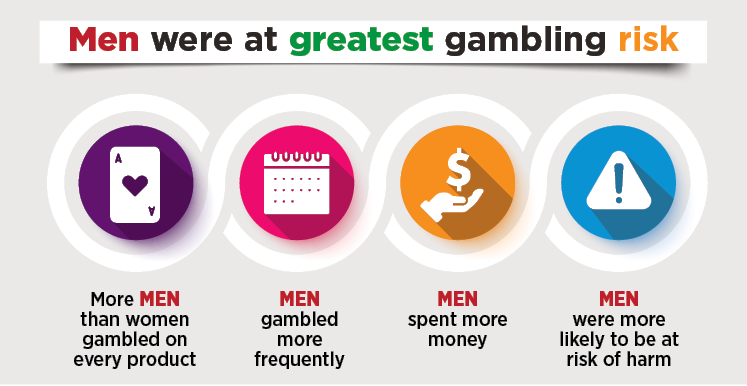
- Most Australians believed that there were 'too many opportunities for gambling nowadays' (77%), that gambling is 'dangerous for family life' (68%) and gambling 'should be discouraged' (59%).
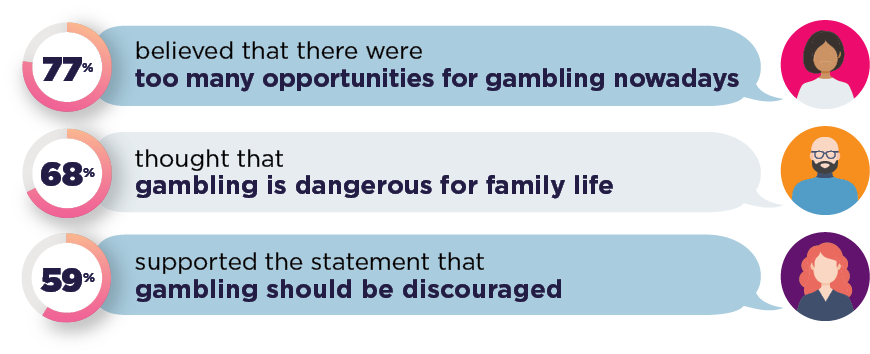
Further detail can be found at: Gambling participation and experience of harm in Australia.
What do Australians think about sports and race betting advertising?
- Australian adults reported being concerned about the saturation of sports and race betting (wagering) advertising and the impacts it has:
- Two in three (69%) believed that wagering advertising is 'too common', and half (53%) thought it 'normalises gambling among children'.
- Seeing or hearing ads also affected people's engagement with sports; most felt it made 'betting seem like a normal part of sport' (69%), 'sport less family-friendly' (60%), and 'decreases their enjoyment of sport' (46%).
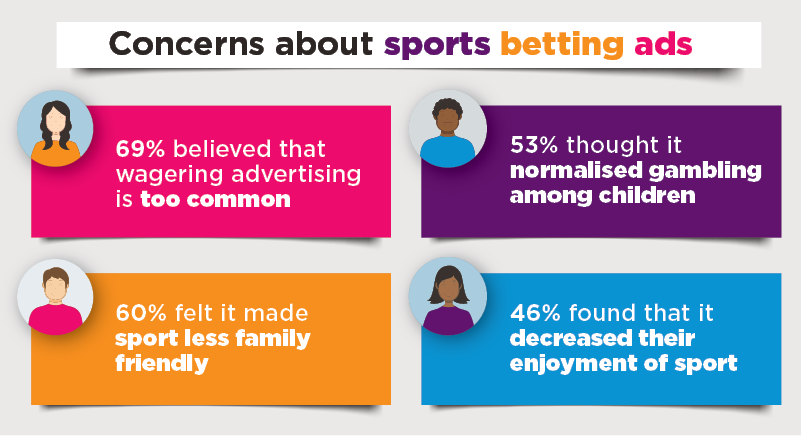
Further detail can be found at: Community attitudes towards sports and race betting advertising in Australia.
What impact does seeing or hearing race and sports betting advertising have?
- Australian adults were regularly exposed to wagering advertising in the past 12 months:
- Four in five (78%) reported seeing or hearing wagering advertising at least once a week; two in five (41%) were exposed four or more times a week.
- Young people (aged 18-34 years) were more likely to be exposed through 'interactive media' (e.g. social media, online), and people aged 55+ years through 'traditional media' (e.g. TV, radio, print media).
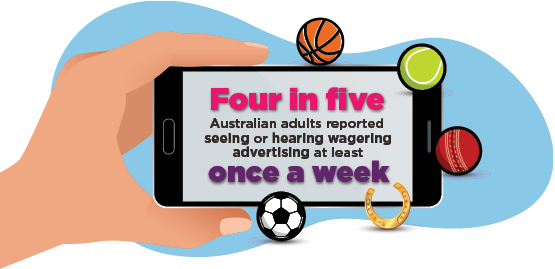
- People who were exposed to wagering advertising at least weekly were more likely to:
- have spent money gambling on sports and racing
- be classified as being at risk of gambling harm.
- Exposure to wagering advertising influenced betting behaviour, often in risky ways:
- 21% were prompted to start betting for the first time
- 28% changed what they bet on or tried a new form of betting
- 29% placed bets on impulse
- 34% increased their betting.
- Exposure to wagering advertising had the greatest impact on young people (aged 18-34 years) and people at-risk of gambling harm:
- One in five young women (19%) and one in seven young men (15%) started betting for the first time after seeing or hearing an ad on TV.
- Young people most often increased their betting in response to advertising on TV, streamed content, social media, online and direct messages.
- Exposure to wagering advertising (across any platform) prompted half (50%) of those at risk of harm to increase their betting, 41% to change what they bet on/try a new form, and 40% to bet on impulse.
Further detail can be found at: Exposure and impact of sports and race betting advertising in Australia.
What do Australians think we should do?
- Australians believe that governments should play the biggest role in deciding how wagering is advertised (64%).

- Many Australians support outright bans on wagering advertising across all platforms and types, including:
- all wagering advertising broadcast before 10:30 pm on radio, TV, live-stream and on-demand (53% support; 19% oppose)
- all social media advertising (47% support; 23% oppose)
- sponsorship of sports coverage (42% support; 26% oppose).
Our survey
An online general community panel survey was conducted in July 2022. A sample of 1,765 Australian residents aged 18 years and over, aligned with ABS population parameters of age, gender and location of residence (metro and non-metro), completed the survey. We explored participants' views on sports and race betting advertising by asking how much they agreed with a range of statements on a scale from 'strongly disagree' to 'strongly agree', and whether they 'supported' or 'opposed' a range of potential policy responses. As part of the survey, we also asked participants about their gambling participation in the past 12 months, including what products they gambled on, how much they spent, what platforms/modes they used to gamble, and how gambling impacted their health and wellbeing. We partnered with ORIMA Research and the Online Research Unit (ORU) to collect the survey data.
Learnings and next steps
Gambling has expanded at a rapid pace in Australia and related harms are an increasing concern. This study has provided important insights into gambling participation, expenditure and harm among Australian adults. We have also captured community views on wagering advertising and how it should be regulated.
Our findings reveal that almost three-quarters of Australians spent money gambling in the past 12 months (often on multiple products including lotteries, horse racing, sports and pokies). Around half of those who gambled would be classified as being at risk of experiencing gambling harm. Most survey participants believed that there were too many opportunities to gamble in Australia, and they were concerned about the proliferation of advertising for sports and race betting and its impacts on children and the broader community. Seeing or hearing wagering advertising was reported to influence betting behaviour in risky ways, especially among young people and those at risk of gambling harm. Community support for outright bans on wagering advertising across all platforms and types was common, and most believed that governments should play the biggest role in how sports and race betting is advertised in Australia.
Findings from our research can help to inform future regulatory and policy responses to minimise gambling-related health, social and economic harms to affected individuals and communities. Participants in our studies have suggested a range of initiatives and consumer protection measures, including limiting the availability of gambling advertising and promotions (especially related to sports and race betting), reducing the number of poker machines in venues and restricting operating hours, implementing universal pre-commitment systems and effective self-exclusion programs for both online and land-based gambling, and developing a National Gambling Strategy (similar to Australia's National Alcohol Strategy) (e.g. Jenkinson et al., 2020).
We have also identified several priorities for future research to better understand trends in gambling consumption and its impacts on health and wellbeing among people who gamble. The Australian Gambling Research Centre's new Gambling Trends Study captures data on participation, motivations and expenditure on gambling, typical behaviours engaged in during a session of gambling (including session length, number of bets, use of wagering promotions, co-consumption of alcohol), and use of consumer protection tools (including setting deposit limits, accessing activity statements, unsubscribing from wagering marketing). The study also examines the nature and extent of gambling harms (including impacts on finances, relationships and health and wellbeing), and explores participants' views on emerging gambling trends (including gambling advertising and marketing) and areas for emerging policy and practice focus.
Further investment in a national gambling prevalence study and longitudinal research programs would also provide representative population-level data on the prevalence and patterns of different gambling behaviours in Australia, allowing changes in the extent and nature of gambling and related harms to be assessed over time.
References
Australian Gambling Research Centre (AGRC). (2020). Gambling in Australia. Canberra: Australian Institute of Health and Welfare (AIHW). Retrieved from www.aihw.gov.au/reports/australias-welfare/gambling
Hing, N., Russell, A. M. T., Browne, M., Rockloff, M., Greer, N., Rawat, V. et al. (2021). The second national study of interactive gambling in Australia (2019-20). Gambling Research Australia. Retrieved from www.gamblingresearch.org.au/publications/second-national-study-interactive-gambling-australia-2019-20
Jenkinson, R., Sakata, K., Khokhar, T., Tajin, R., & Jatkar, U. (2020). Gambling in Australia during COVID-19. Melbourne: Australian Gambling Research Centre, Australian Institute of Family Studies. Retrieved from www.aifs.gov.au/sites/default/files/publication-documents/2009_gambling_in_australia_during_covid-19_0.pdf
Queensland Government Statistician's Office (QGSO). (2021). Queensland Treasury, Australian Gambling Statistics, 36th edition, 1993-94 to 2018-19. Brisbane: QGSO. Retrieved from www.qgso.qld.gov.au/issues/2646/australian-gambling-statistics-36th-edn-1993-94-2018-19.pdf
Victorian Responsible Gambling Foundation (VRGF). (2022). 948 gambling ads daily on Victorian free to air TV in 2021. Melbourne: VRGF. Retrieved from responsiblegambling.vic.gov.au/resources/gambling-victoria/gambling-advertising
Notes
- Australian Bureau of Statistics (ABS) population distributions for age, sex and location were used to develop weights that were applied to the data.
- Recent (past 12 months) gambling participation was derived from responses regarding frequency of involvement in 13 types of gambling activities, including: Sports betting; Horse race betting; Greyhound race betting; Harness race/trots betting; Lotteries or scratchies; Keno or bingo; Poker machines (pokies); Casino table games (e.g. blackjack, poker); Online casino games; eSports; Fantasy sports; Novelty betting; and Virtual sports.
- The total number of valid responses for the online survey varies by question. Appropriate tests were conducted by taking account of variable types. We reported '(statistically) significant' when p-value < 0.05.
- At-risk gambling during the past 12 months was assessed using the Problem Gambling Severity Index (PGSI). Further information can be accessed at: Ferris, J., & Wynne, H. (2001). The Canadian Problem Gambling Index: Final report. Ottawa: Canadian Centre on Substance Abuse.
- While we were able to recruit a broad cross-section of participants, the findings are based on responses from a sample of online survey panellists who opted to complete the survey. As such, although we applied ABS weights to the data, these findings may not be representative or generalisable to the wider population of adults who gamble in Australia. Further, while confidentiality was assured and there were no negative consequences of disclosure, participant responses were based on self-report and may be subject to some social desirability or recall bias.
See all survey snapshots
- Gambling participation and experience of harm in Australia
- Community attitudes towards sports and race betting advertising in Australia
- Exposure and impact of sports and race betting advertising in Australia
News stories
- Cut-off time: Support for banning gambling ads before 10.30pm| The Age
- Two thirds of Australians believe gambling ads are 'too common'| ABC News
- New Report Reveals Harmful Impact Of Gambling Ads| 10 News First Twitter
- Fresh Measures To Reduce Gambling Harm In Aussie Families| 10 News First Twitter
- Majority of Australians support banning gambling advertising on TV, study finds| The Guardian
- Young Australians being exposed to tsunami of powerful gambling ads, study reveals| 9News
- Support for ban on gambling ads| ABC News
- Most Australians support banning gambling ads: research| ABC News
- 'Destroying lives': Calls for action as survey finds two in five Australian adults gamble weekly| SBS News
- 'Money off misery': Crossbenchers demand Labor crack down on gambling ads, political donations| SBS News
- New research finds three-quarters of Australian adults have gambled at least once over the past 12 months| The West Australian
Contributions and acknowledgements
This research was conducted by the Australian Gambling Research Centre (AGRC) team at the Australian Institute of Family Studies (AIFS): Dr Rebecca Jenkinson, Cailem Murray Boyle, Dr Kei Sakata, Nancy Greer, Uma Jatkar and Dr Brian Vandenberg. The AGRC was established under the Commonwealth Gambling Measures Act 2012. Our gambling research program reflects the Act, embodies a national perspective and has a strong family focus. We would like to greatly acknowledge AIFS for supporting this work. Special thanks go to our colleagues in the Communications team at AIFS, and to ORIMA Research and the Online Research Unit for their encouragement, assistance and guidance throughout the research process. We are indebted to the research participants for their support, generosity of time and valuable contributions to this research.
Featured image: © GettyImages/mammuth
Suggested citation
Australian Gambling Research Centre. (2023). Gambling participation, experience of harm and community views: An overview. Melbourne: Australian Gambling Research Centre, Australian Institute of Family Studies.
Download Research snapshot
Related publications

Gambling participation and experience of harm in Australia
This snapshot explores how often Australians gamble, how much they spent, their risk of gambling harm, what products…
Read more
Community attitudes towards sports and race betting…
Overall, this snapshot finds that 69% of Australian adults think that sports and race betting advertising is too common…
Read more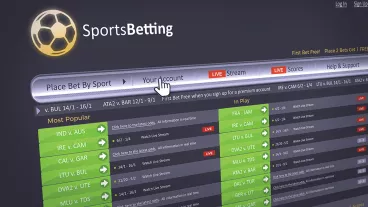
Exposure and impact of sports and race betting advertising…
This snapshot shows where and how often Australians are exposed to wagering advertising. It then explores the…
Read more